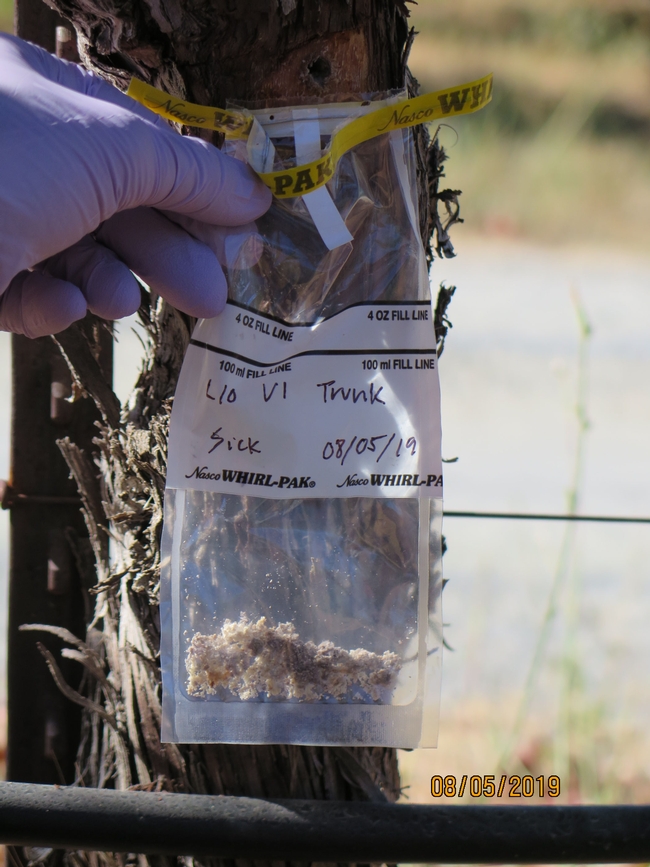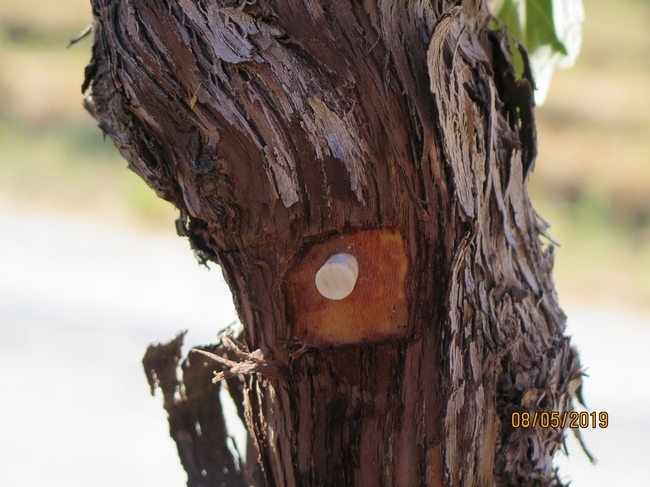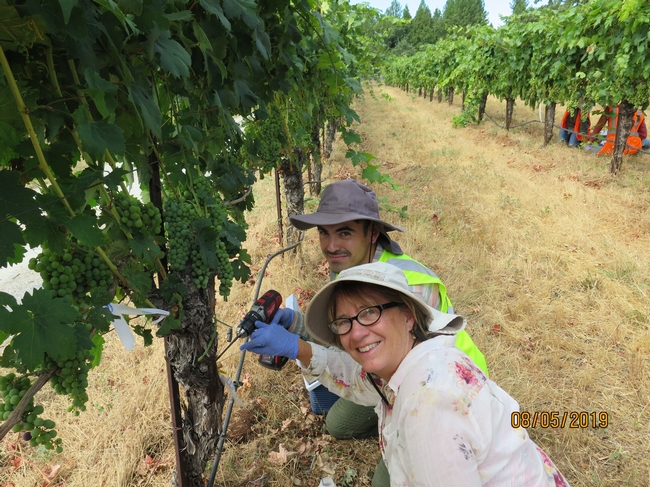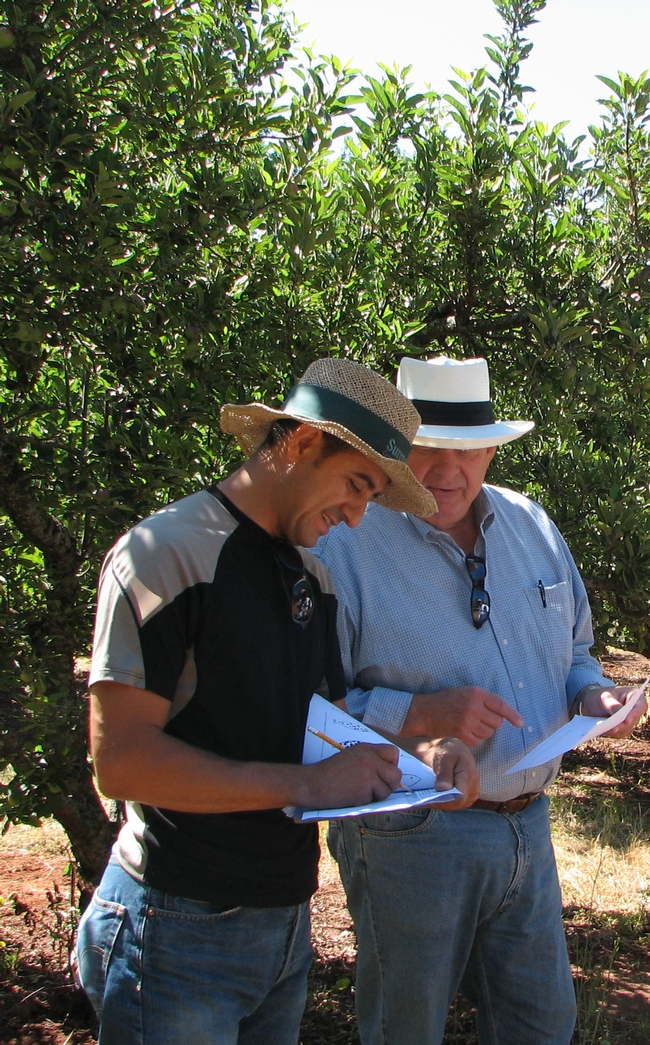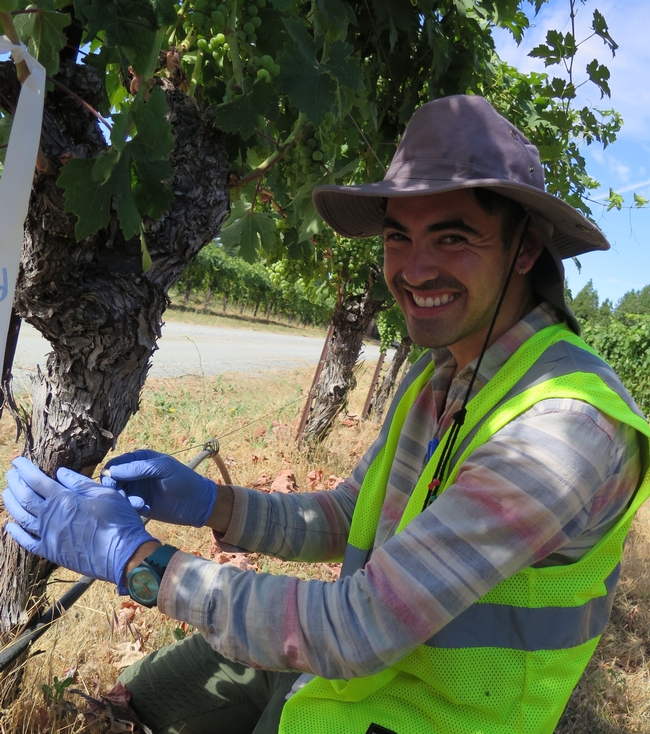
Biological control is defined as any activity of one species that reduces the adverse effects of another species. Living organisms are the agents of biological control, and although we may think of ladybugs and lacewings when we hear the term, bacteria and fungi can be biological control agents too! Microbes can act as antagonists to other microbes, they can out-compete them for nutrients or space, or they can secrete products that inhibit their growth. In fact, many biologically based pesticides harness the products of microbes, (think Bt or Spinosad).
The target of this biocontrol search is a formidable one. Grapevine trunk disease is present in nearly every mature vineyard, shortening its life and productivity. Some have even referred to the trunk disease epidemic as the "next phylloxera," because the disease is so devastating to vineyards.
The disease is caused by several fungi, all entering the vine via spores carried by rain on pruning wounds. Esca (called measles for the spotting on the fruit), Eutypa dieback, Botryosphaeria dieback, and Phomopsis, are all considered grapevine "trunk diseases"-infection can run from the pruning wound all the way into the trunk. The disease weakens spurs and shoots, in some cases killing them. Yield and grape quality is decreased. Eventually, diseased vines 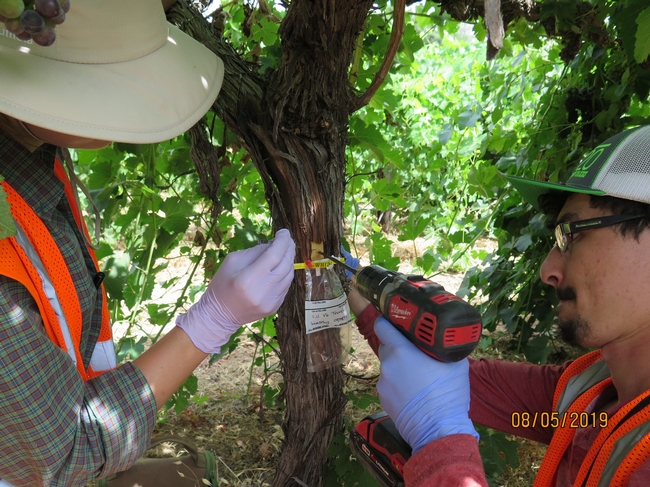
Since pruning wounds can be susceptible to infection for weeks after pruning, the recommended practices to prevent infection are to prune late, to "double" prune, that is, make an initial pass in winter leaving 12-14 inches-this can be done mechanically-and then come back closer to budbreak when rains are less frequent to do the final pruning cuts, and to apply fungicide "protectants" to pruning wounds. Growers should also remove all infected prunings from the vineyard, minimize stress to new plantings and carefully inspect new planting material to be sure it is free 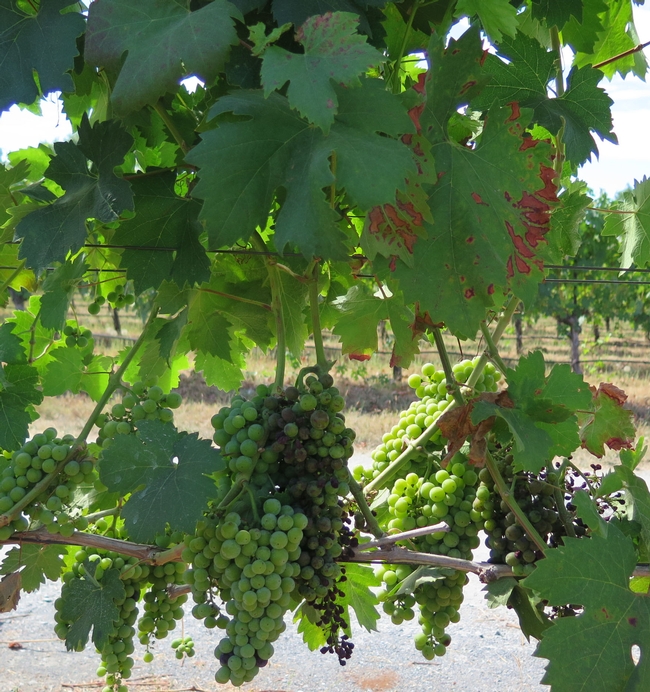
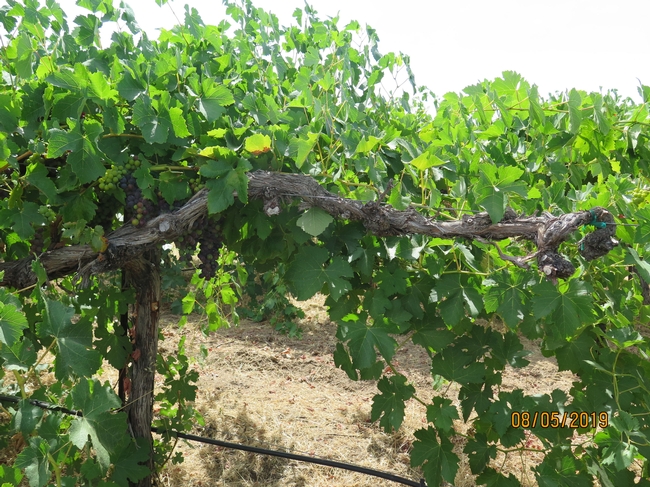
Enter the Eskalen lab! A group of UC Davis students studying plant pathology under scientist Akif Eskalen to help solve agricultural plant disease problems! Akif has recently taken the position of UC Plant Pathology Specialist, replacing the late Doug Gubler, and we are so fortunate to have him! Under Akif's direction, Marcelo will be culturing probably hundreds of microbes collected from vines. He'll screen them in the lab, and, fingers crossed, he'll find a few that show promising biological control against canker. Maybe, just maybe, he'll find some foothill microbial gold. I'll keep you posted...
